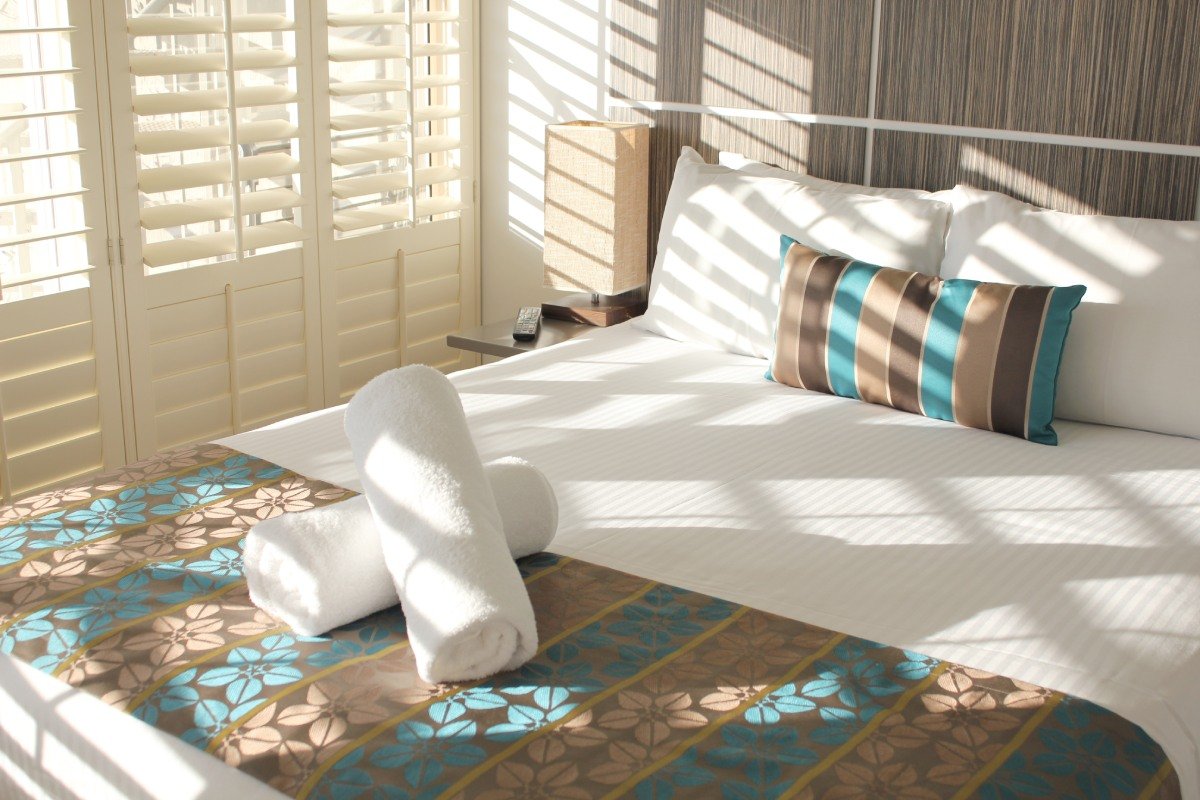How can you control light with plantation shutters? How much light do they block? Do they completely blackout a room?
If you’ve been thinking about updating your window coverings and fancy the idea of plantation shutters for your home, you will need to know that they can tick all of the right boxes. For example, do they look the part? Tick! Can they provide ample privacy? Tick! Are they easy to clean and maintain? Tick!
But, what about matters of light control? How much light do plantation shutters block? Are they able to completely black out a room?
In this article, we’re going to take a closer look…
How much light do plantation shutters block?
One of the primary benefits of plantation shutters is how excellent they are for light control. As they’re made up of slats or ‘louvres’, you can tilt them to varying angles, thus either reducing or increasing the amount of natural light coming into your home.
As for ‘how much light’ plantation shutters are able to block out, there are a number of different factors that can influence the outcome (which we will cover shortly).
How can you control the amount of light in a room with plantation shutters?
Given how many different styles of plantation shutter there are on the market, with a few keen adjustments you can have significant control over the amount of sunlight you allow into your home.
When completely closed, full-height shutters are exceptional light blockers. This makes them particularly popular for bedrooms.
Slats/louvres run the full height of the panel, or alternatively, you can opt to have a mid-rail added, thus allowing you to open the upper or lower slats separately from one another, improving the overall light control.
Then you have twin panels on tier-on-tier shutters which essentially work like stable doors. You can open the top of the shutters allowing light to flood the room while keeping the bottom tier closed in order to preserve some privacy (and of course, you can open/close both together as necessary depending on how much light control you want).
There’s also a misconception that says solid shutters provide an ‘all or nothing’ approach to light control, however, this isn’t the case. The right manufacturer can customise your shutters according to your requirements.
Louvre size is key
Another important aspect of light control is the size of the slats. Picking the ideal louvre size for your shutters can not only improve the look and feel but can also provide further light control as well.
Adjusting your slats helps you to maintain a balance between the right amount of natural light and overall protection.
Tilt rods offer control over light levels
Tilt rods are fitted to plantation shutters so that they can easily be opened and shut. Not only that, but they can allow you to adjust your light control with precision. In some cases, you can even have a tilt rod system installed allowing you to control the slats on both the top and the bottom independently of one another.
Do plantation shutters completely black out a room?
Having large louvres rather than smaller ones can certainly help to obstruct maximum sunlight when completely closed. That said, unless optimised for a ‘blackout’ effect, plantation shutters will not keep all of the light out entirely.
That’s not to say that you won’t have a dark room with zero glare, however, they don’t provide as much darkness as blackout curtains, for example.
Ultimately, if you want optimum room darkening, then you’ll need plantation shutters that have been designed especially for a blackout effect.
This can be done in a number of ways. Some people prefer to have integrated blinds installed as a secondary layer. This option is perfect for home cinemas, nurseries, or any other room that requires total darkness.
Another alternative would be to have your windows tinted. The darker the film, the more light control you can have.
However, plantation shutters on their own do block out a fair amount of light when completely closed with the louvres shut. So, unless you require a total blackout effect, your typical plantation shutters will provide ample control.
What are the other benefits of having more control over the sunlight entering your home?
Not only can you control the amount of natural light entering your home with plantation shutters, but the warmth as well.
On a sunny day during the summer months, you can have your plantation shutters open completely, allowing natural light in with plenty of breeze and air circulation. This is ideal for keeping your home at a reasonable temperature, rather than having to whack up the AC or turn every fan on in your home. Here in Perth, you can also opt to have the shutters completely closed to keep the scorching heat out on particularly hot days too.
During the winter months, you can also keep the plantation shutters closed and keep much of the warmth in. The only downside to this is how dark your home will be. Then again, on an overcast day in the winter, you won’t be getting much in the way of sunshine anyway.
This level of light control is also very good for UV damage. Too much natural sunlight throughout the day can fade furniture and flooring, rendering your home and belongings worn and discoloured. With the amount of light control, plantation shutters provide, you can reduce the impact of the sun’s UV rays and protect your property from fading under the sun.
Conclusion
Let’s recap:
Plantation shutters offer a great level of flexibility with light control.
They do not provide a blackout effect (unless customised to do so).
In any case, plantation shutters—when completely closed—can eliminate glare and provide a sufficient level of darkness.
Having flexible light control can help you prevent UV damage while regulating the temperature of your home.
Still undecided? Want to learn more about the benefits that plantation shutters can offer you? Feel free to contact us today and we’ll gladly answer your questions.



